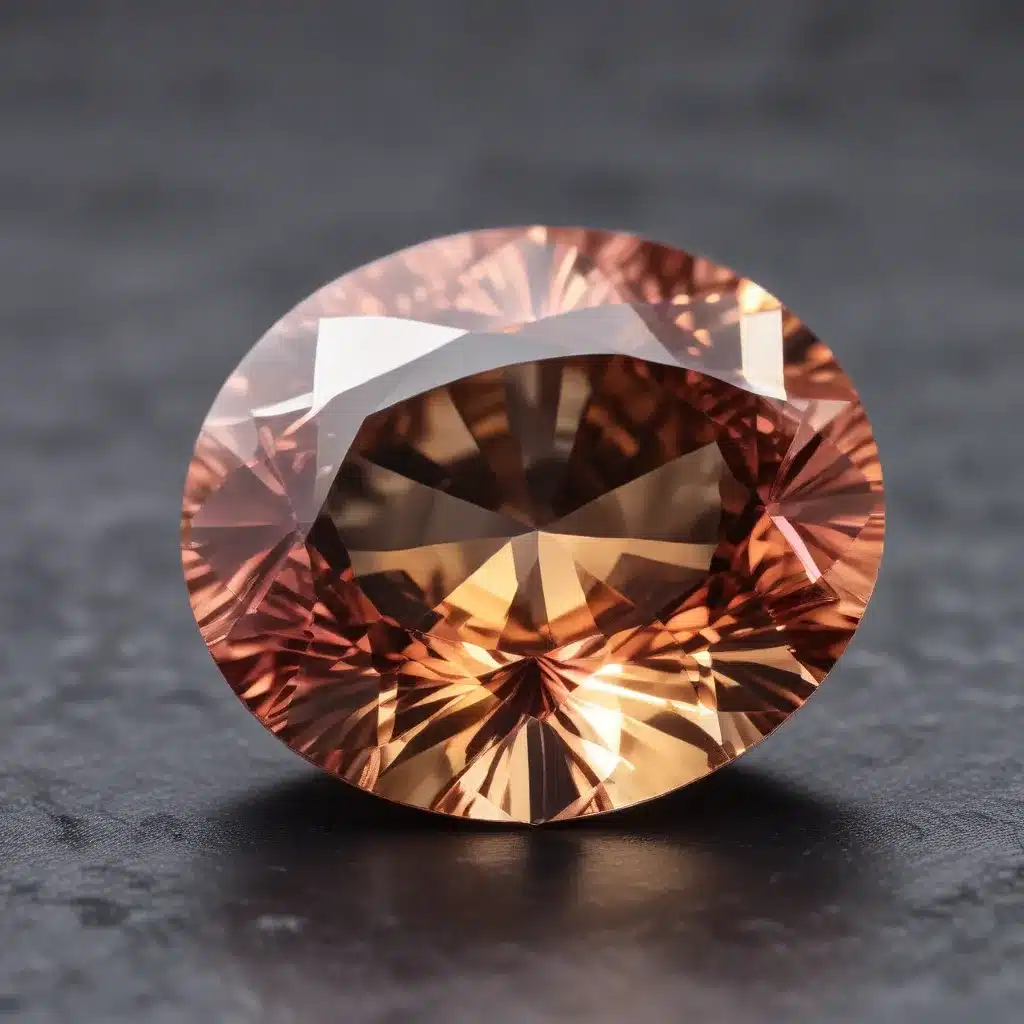
The art of gem cutting is a delicate balance between precision engineering and creative expression. As a gem expert at Shelby Gem Factory, my role is to unlock the natural beauty and brilliance hidden within each rough stone. Through an in-depth understanding of the science behind gem cutting, I can transform these raw materials into dazzling works of art that captivate the eye.
Fundamentals of Gem Cutting
The journey begins with a deep dive into the crystalline structure and optical properties of gemstones. Each variety of gem, from diamond to emerald, possesses a unique crystallographic makeup that dictates its potential for cutting and polishing. Understanding the cleavage planes and refractive index of a gem is crucial, as these factors determine the optimal angles and proportions for maximizing its brilliance and fire.
Factors such as Mohs hardness, dispersion, and pleochroism also play a significant role in gem cutting. A diamond, for example, with its high hardness and dispersion, requires a different approach than a softer, less dispersive stone like amethyst. By considering these inherent properties, I can strategize the most effective cutting techniques to bring out the best in each gem.
The Anatomy of a Gem Cut
The precise placement and alignment of a gem’s facets are the foundation of its optical performance. The table, crown, pavilion, girdle, and culet must work in harmony to create a balanced interplay of light refraction and reflection. Calculating the optimal depth percentage, table size, and crown and pavilion angles is a meticulous process, as even minor deviations can dramatically impact the gem’s brilliance and fire.
Ensuring proper symmetry is also paramount, as any irregularities can disrupt the seamless flow of light within the gem. I must carefully plan and execute each facet, aligning them with the gem’s natural crystallographic structure to maximize the potential for captivating scintillation.
Cutting Techniques and Methods
The evolution of gem cutting has been marked by a blend of traditional manual techniques and the integration of advanced technologies. While skilled hand-faceting remains an integral part of the craft, modern tools like laser cutting and computer-aided design have revolutionized the industry.
These innovations allow for unprecedented precision, enabling me to push the boundaries of creative expression. From the classic round brilliant to the more contemporary radiant and cushion cuts, each design is meticulously planned and executed to elevate the gem’s natural brilliance.
Brilliance and Fire Optimization
The ultimate goal of gem cutting is to maximize the stone’s brilliance and fire – the captivating interplay of white light reflections and spectral color dispersions. This is achieved through a deep understanding of the principles of light refraction and reflection.
By carefully controlling the angles and proportions of the facets, I can guide the path of light entering the gem, ensuring that it is efficiently bounced and refracted back to the viewer’s eye. This results in a mesmerizing display of sparkle and colorful flashes that captivate the senses.
Gemstone Cutting and Gemology
The role of the gemologist is paramount in the gem cutting process. Through rigorous certification and grading systems, such as those developed by the Gemological Institute of America (GIA), I can assess the quality and potential of each rough stone. This knowledge informs my cutting strategies, allowing me to tailor the design to the unique characteristics of the gem.
Additionally, understanding the specific requirements of different gem types, whether it’s the brilliance-focused cutting of diamonds or the color-enhancing techniques for colored stones, is crucial in unlocking their full aesthetic potential.
Advancements in Gem Cutting
The future of gem cutting is shaped by the integration of advanced technologies and a commitment to sustainable practices. Computational modeling and simulation tools allow me to experiment with various cutting designs, optimizing for brilliance, fire, and even environmental impact.
Precision cutting instruments, such as automated faceting machines and laser-guided systems, have elevated the craft, enabling levels of accuracy and consistency that were once unimaginable. As the industry continues to evolve, I remain focused on striking a balance between technological innovation and the preservation of the time-honored traditions that have defined this specialized craft.
The Art and Science of Gem Cutting
Gem cutting is a captivating blend of art and science, where the pursuit of technical perfection is guided by a deep appreciation for natural beauty. As a master gem cutter at Shelby Gem Factory, I am driven by the challenge of unlocking the hidden brilliance within each rough stone, creating dazzling, one-of-a-kind gems that captivate the eye and inspire the imagination.
Through my specialized knowledge and unwavering attention to detail, I am able to transform the raw materials of the Earth into exquisite works of art that elevate the human experience. Whether it’s the mesmerizing fire of a diamond, the rich color saturation of a ruby, or the soothing hues of an aquamarine, each gem I cut tells a story of the Earth’s primordial history and the skill of the artisan who brought it to life.
As the gem cutting industry continues to evolve, I remain committed to pushing the boundaries of what is possible, leveraging the latest technologies and cutting-edge techniques to create gemstones that are true masterpieces of nature and craftsmanship. It is this passion for the art and science of gem cutting that drives me to continuously refine my skills and explore new frontiers, ensuring that Shelby Gem Factory remains at the forefront of this captivating field.

